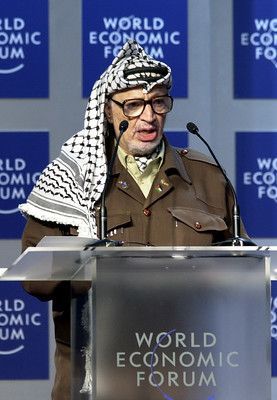The likely collapse of Palestinian nationalism in the West Bank played a key but largely unacknowledged role in the recent conflict over Gaza.
Despite Monday’s ceasefire agreement between Palestinian Islamic Jihad (PIJ) and Israel over Gaza the bloody conflict between them looks like being far from over. From a broader perspective it is, unfortunately, more likely to be a prelude to even more intense clashes.
Much of the discussion of the three-day conflict over Gaza has treated it as a sequel to the several battles over the territory since 2006. It has focused on the similarities with past clashes but generally missed the important differences.
Anti-Israel activists have as usual made ill-founded charges of Israel committing massacres and deliberately targeting children in Gaza – for one thing conveniently forgetting that a high proportion of civilian casualties were caused by misfires by PIJ’s own rockets. At the same time they have characteristically ignored the overtly genocidal goals of Islamists in the area and the rabid anti-Semitism of its Iranian backers.
Meanwhile, Israel – completely justifiably – asserts its right to self-defence but at the same time it lacks a long-term vision. For it the focus is on containing any conflict until the next set of clashes come along.
The people who suffer most from this ongoing conflict are of course the people of Gaza. They languish, generally in desperate poverty, in a densely populated slither of land with their movement tightly controlled. And of course the battles going on around them are terrifying.
This time around there were three important differences from the several previous rounds of fighting since Israel unilaterally withdrew from Gaza in 2005.
First, Israel struck first. Usually Israel retaliates after rockets are fired from Gaza but this time Israeli aircraft launched the initial assault. Israel said it was reacting to intelligence reports suggesting attacks by PIJ on Israeli civilians were imminent. There was a planned assault on Israelis using anti-tank weapons and snipers in the area adjoining the Gaza strip.
Second, Hamas, the Islamist movement which controls Gaza, did not get involved in the fighting. Although there was always a risk of escalation the conflict remained one between Israel and PIJ.
In what Israel called Operation Breaking Dawn it succeeded in its goal of assassinating several senior PIJ leaders while avoiding a broader escalation. Tayseer al-Jabari, a senior PIJ commander, was assassinated killed by an airstrike on his apartment on Friday. Khaled Mansour, the PIJ commander of the southern Gaza Strip, suffered a similar fate the following day. Israel also killed Rafat al-Zamli, the commander of the PIJ's rocket unit.
Overall Israel was positive about the outcome of the fighting. Yair Lapid, the prime minister, said in a statement that: "In Operation Breaking Dawn, Israel reclaimed initiative. It restored Israel’s deterrence. All our goals were achieved. The entire senior military command of Islamic Jihad in Gaza was successfully targeted within three days. The strength and ingenuity of the Israel Defense Forces dealt a devastating blow to the enemy”. He went on to laud the success of the Iron Dome missile defence system in intercepting the vast majority of hundreds of rockets fired at the country by PIJ.
But this assessment ignores the final and most important new element in the conflict. It was essentially triggered by events in the West Bank rather than Gaza itself.
If anything it started when an Israeli border police undercover unit arrested Bassam al-Saadi, the PIJ head in Jenin in the northern West Bank. His son-in-law, who is also an aide, was also arrested in the operation. This action apparently precipitated the PIJ threats against Israel which led to the strikes on Gaza.
The back story to the West Bank arrests help explain what is new in recent developments. The Palestinian Authority (PA) – essentially the rump of the old Palestine Liberation Organisation (PLO) leadership – is collapsing in the northern West Bank. Jenin in particular has become a stronghold of the PIJ.
This development poses serious problems for all of the key actors involved. For Israel it means it can no longer rely on the PA to play a role in containing Palestinian militancy. It is increasingly using its own forces to police the area rather than cooperating with PA forces. This helps explain why Israel was so keen to weaken the PIJ leadership in its Gaza operation.
But it also poses a problem for Hamas as the much smaller PIJ group seems to be gaining ground in the West Bank. Although Hamas has to a degree tolerated PIJ it sees itself as having the right to lead the Palestinians. This rivalry probably helps account for Hamas’s relatively benign attitude to Israel’s military intervention in Gaza this time around.
Finally, the prospective collapse of the PA seems to suggest the death knell of Palestinian nationalism. Until about 2006, when Hamas won elections in Gaza, Palestinian nationalism was widely seen as the main political force among the Palestinians. Since then there has been a deep schism with Hamas taking over Gaza and the old nationalists still controlling the West Bank.
Now the tide seems to be turning towards Islamism in the West Bank as well. That probably explains why the PA has postponed elections in the territory indefinitely. Only it looks like the leading Islamist force in the West Bank could turn out to be PIJ rather than Hamas.
This process of the Islamisation of the West Bank is still unfolding. But it looks like Palestinian nationalism, for many years the leading political force among the Palestinian people, is being increasingly marginalised by Islamism. This story probably still has some way to run.
Photo: World Economic Forum (www.weforum.org) www.swiss-image.ch/Photo by Remy Steinegger

